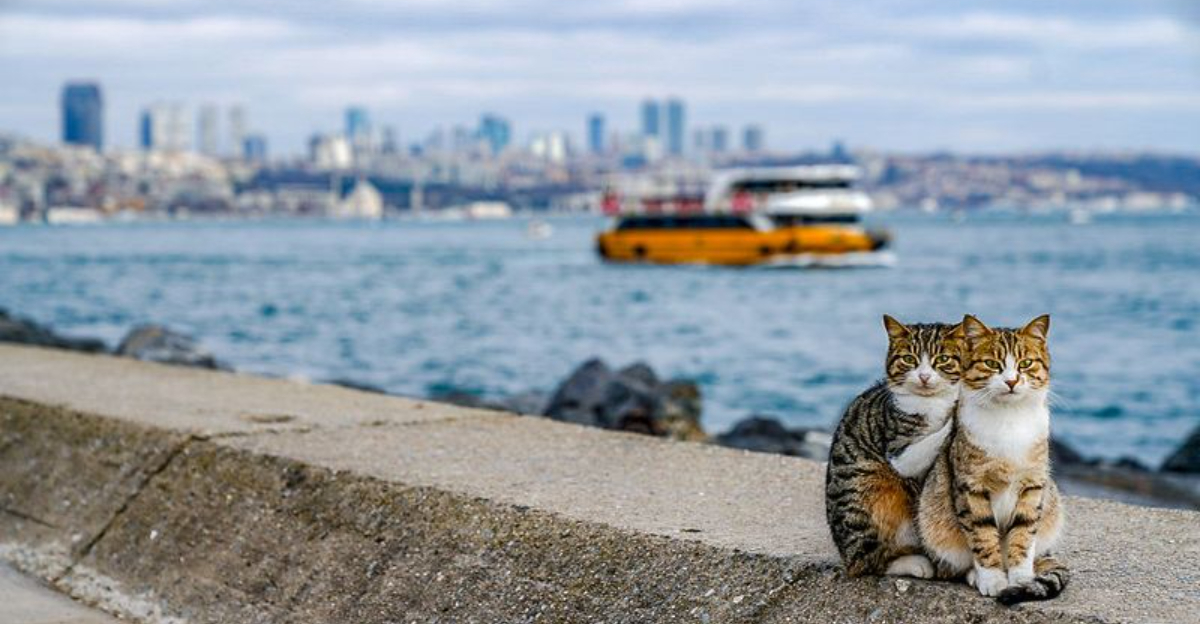📖 Table of Content:
Istanbul is world-famous for many things—its rich history, stunning architecture, and vibrant street life. But one of the city’s most charming features is its large population of street cats. From ancient ruins to bustling cafés, you’ll find cats lounging comfortably as if they own the place—and in many ways, they do. In this post, we explore the fascinating cultural, historical, and religious reasons behind Istanbul’s deep-rooted love for felines. Discover how centuries of tradition, community care, and mutual respect have made Istanbul a true haven for cats.
1. Historical and Cultural Significance
In the bustling lanes of Byzantine and Ottoman Istanbul, cats were more than mere companions. They were guardians, tasked with protecting vital food supplies and precious manuscripts from vermin. This practical necessity evolved into cultural reverence. As Istanbul’s trade routes flourished, cats became symbols of prosperity and protection. Residents, from sultans to commoners, revered them, embedding felines into the city’s folklore and traditions. Their presence, a constant reminder of a time when they were indispensable, continues to charm both locals and visitors alike. This historical bond remains a cornerstone of Istanbul’s vibrant cultural tapestry.
2. Religious Reverence
Cats in Istanbul enjoy a reverence deeply rooted in Islamic tradition. The Prophet Muhammad’s fondness for cats is well-documented, and his respect for them has influenced Islamic cultures. In this city, cats are seen as clean creatures, often welcomed in homes and places of worship. Their gentle presence in mosque courtyards adds a layer of tranquility and spiritual reflection. This religious respect has nurtured a society where cats are not just tolerated but cherished, contributing to their prominent presence in Istanbul. It’s a harmonious coexistence, reflecting both faith and tradition.
3. Community Care and Legal Protections
In the heart of Istanbul, the community embraces its stray cats as shared pets. Locals frequently leave out food and water, and shelters appear in alleyways to protect them from the elements. This collective care is further supported by municipal programs offering veterinary services and spay/neuter initiatives. Turkish animal welfare laws grant cats the status of “living beings,” imposing penalties for abuse and ensuring their protection. Such legal and societal support reinforces the city’s dedication to feline welfare, turning duty into delight as residents lovingly tend to their whiskered neighbors.
4. Adaptability and Urban Integration
In Istanbul, cats have mastered the art of urban living. They effortlessly navigate the city’s vibrant streets, historical sites, and cozy cafes. Their ability to adapt to such a dynamic environment speaks volumes of their resilience. Often seen lounging in parks or on ferry decks, these felines integrate seamlessly into daily life. Istanbul’s acceptance of cats as part of the urban landscape showcases a unique blend of nature and civilization. This adaptability not only highlights the cats’ survival instincts but also the city’s warm embrace of these agile creatures.
5. Cultural Icons and Media Presence
Beyond local affection, Istanbul’s cats have captured global attention. Films like “Kedi” have immortalized their stories, depicting the deep connection between the city and its feline residents. These cats have become cultural icons, with tourists and filmmakers alike drawn to their allure. Their stories transcend borders, painting a portrait of Istanbul that is as much about its people as it is about its cats. This media presence adds another layer to their significance, making them unofficial ambassadors of a city known for its rich history and charming cats.





